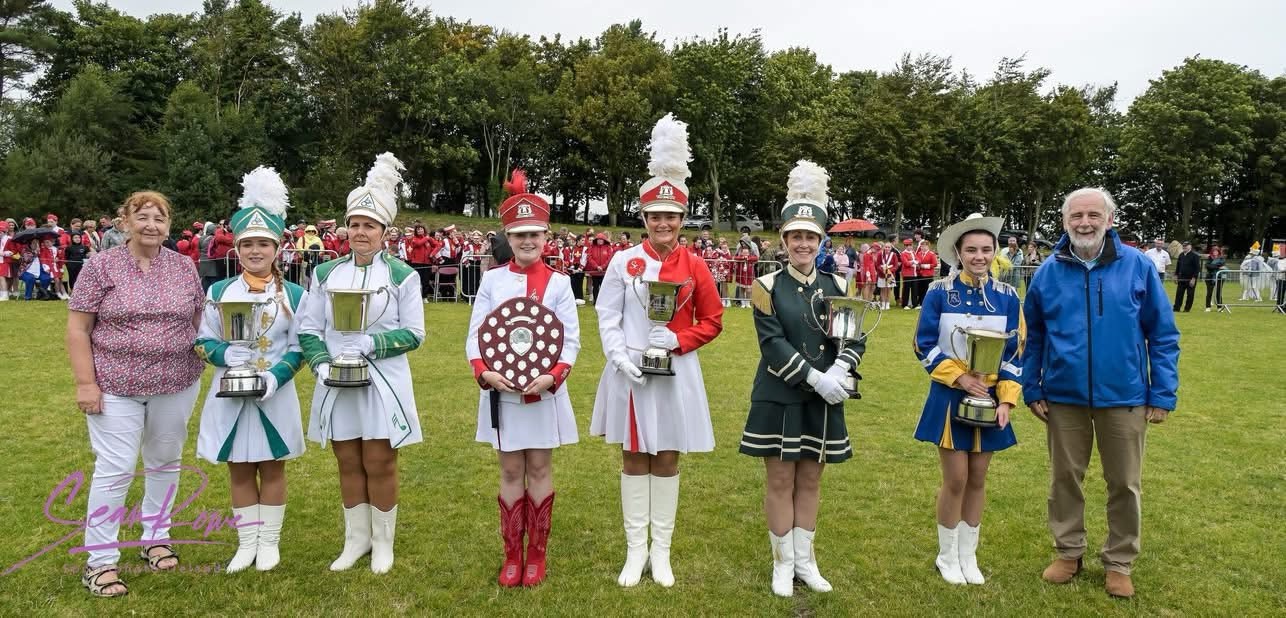The turnout at this year’s marching band competition was the lowest in several years. To be clear, this is not a reflection on the bands themselves—every performance was outstanding, and the standard of music and presentation was as high as ever. My concern lies with the format of the competition itself. Six bands took part this year, competing across five sections. That structure simply isn’t sustainable.
Over the last 25 years, the number of active bands has steadily declined, and even fewer are choosing to compete.
Through the 2010s, participation remained steady—though not at the levels of the early 2000s or the 1990s, it was still competitive. However, Covid caused a real collapse.
Between 2010 and 2019, the average number of bands competing at the ten Fleadhanna was 13 per year. In the four most recent Fleadhanna, however, that average has dropped to just six. In 2019, one band was even eliminated at the Ulster Fleadh due to the strength of entries in the senior miscellaneous section—a stark contrast to this years reduced turnout.
Reform of the competition must be made to get bands back competing. Over the last decade these bands haven’t all disbanded, a number haven’t returned since Covid but a significant number have but made the decision not to come back to compete as they rebuild their bands. The right changes could encourage these bands to come back while also increasing competitiveness for those still involved.
Here are some proposals to consider:
- Revise age categories. Move from rigid age ranges to Junior, Intermediate, and Senior groupings. Shorter performance times could also reduce pressure and make competitions more accessible.
- Introduce a “Band of the Day” award. An overall prize for the highest score would give every band, even those without bands in their section, a reason to push for excellence.
- Create non-competitive performance opportunities. Allow bands to take part in the parade or deliver a short arena performance without entering competition. This would give rebuilding or newer bands the chance to showcase their talents without the pressure of full adjudication. It could also provide a new avenue to attract bands to the Fleadh, allowing them to enjoy the atmosphere and crowds as they parade through the streets on the final Sunday of the festival — always a highlight for both participants and spectators so more bands would be a good thing. While musicians have the Gig Rig, allowing non-competing bands to join the parade would offer them a similar opportunity to perform and be part of the festival.
- Combine Accordion and Miscellaneous sections. These categories were adjudicated together for years under the UMBA and IMBA until 2013, and introducing this approach would create a fuller, more competitive field.
When looking at ways to make competitions more sustainable, some categories can be merged sensibly, while others should remain distinct. Historically, marching bands competing at the Fleadh until 1983 were divided into only two sections—Marching Bands and Pipe Bands. Due to the high number of entrants, this was later expanded to today’s format, but surely the same rationale should be applied now to reduce the number of sections.
The accordion and miscellaneous sections are an obvious fit. They were successfully adjudicated together for years under the UMBA and IMBA, and the similarities in performance style and repertoire make fair comparison possible. Bringing them together would strengthen the competition field without undermining standards.
Flute and Pipe Bands, however, are a different case. Their instrumentation, tone, and tradition set them apart. A flute or pipe band produces a bright, piercing sound that simply cannot be judged on the same criteria as an accordion or miscellaneous band. While all of these groups contribute richly to the Fleadh, it would not be fair—or musically meaningful—to place them in direct competition.
Too many new bands have come and gone after only a year or two, often overwhelmed by the high standard and the lack of space for their style. The Fleadh needs to create room for all levels of marching bands, offering them the chance to be part of Fleadh.
If we want marching bands to thrive, changes like these are essential—not just to preserve the marching band tradition at Fleadh, but to make it vibrant, competitive, and welcoming once again.

